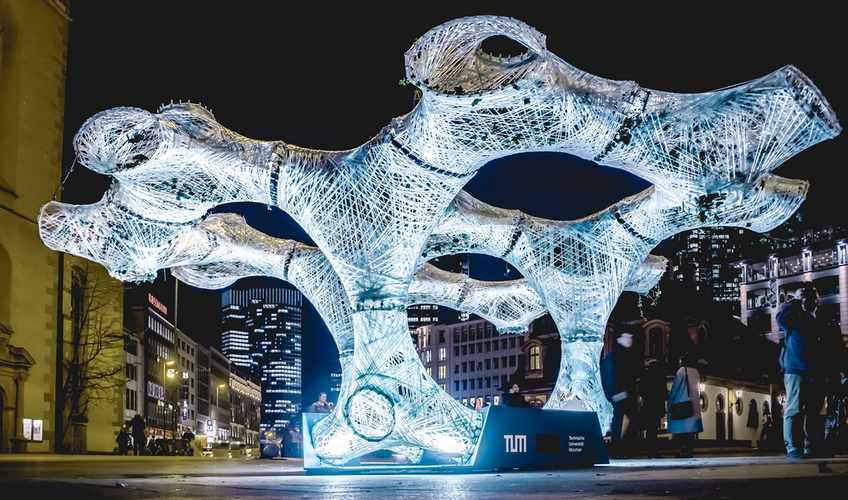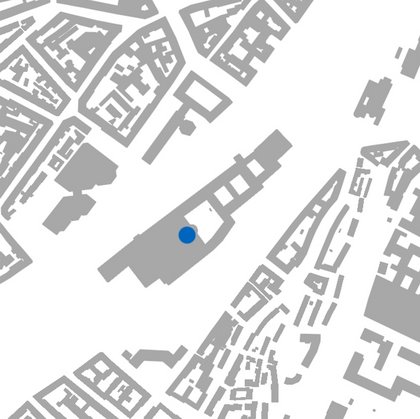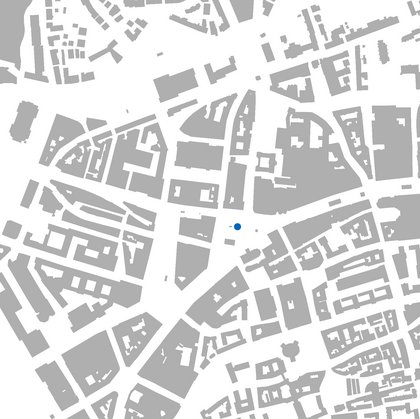Urban Micro Climate Canopy

"Urban Micro Climate Canopy" is an architectural prototype that, as an innovative plant-technical composite structure, opens up new possibilities for improving the microclimate in our cities. The robotically manufactured lightweight construction is planted with climbing plants and mosses and can be experienced for the first time in public space during the "Luminale - Biennale für Lichtkunst und Stadtgestaltung" from 18 to 23 March 2018 at the Hauptwache in Frankfurt am Main.
The project was developed by an interdisciplinary team of architects, landscape architects and engineers from the Technical University of Munich (TUM) at the interface of teaching and research. It is the first experimental structure of a research cooperation between the Chair of Green Technologies in Landscape Architecture (TUM), the Chair of Building Technology and Climate-Friendly Building (TUM) and FibR GmbH from Stuttgart.
Especially against the backdrop of climate change and increasing urban densification, the design of public spaces is an ever-growing challenge. Trees are good for the city climate, but they also need space and above all soil for their roots. In cities the ground is often not suitable for planting, because the surfaces are sealed and pipes or in the subway shafts. However, in order to bring green to the metropolises, "Urban Micro Climate Canopy" as an "artificial treetop".
Thanks to new, robot-supported manufacturing processes, it has been possible to create a modular lightweight structure. which is transparent and yet highly stable. In this construction - similar to a roof greening - there are vegetation areas where climbing plants and mosses grow. Mosses are known for it, particulate matter and nitrogen oxides and thus contribute to an improvement in air quality. Vines can quickly develop a large leaf mass and therefore - like a full-grown tree - create a cooling shade roof.
By combining computer-aided design methods and robotics with the climatic and aesthetic potentials of living plants, an innovative microarchitecture is created that opens up a new dimension in the design of public spaces and is intended to improve the comfort of outdoor spaces, especially in urban heat islands. Lighting and sensors for measuring the microclimate can be integrated into the "artificial tree". This allows valuable data on the urban microclimate to be collected and the effects of the installation on the perceived comfort of residence to be investigated.
The structure creates recreation areas with different shadow and light moods, whereby the material efficiency of the underlying lightweight structure is accompanied by a lightness and transparency that opens up special lighting possibilities. The glass fibres used for the support structure are used not only because of their load-bearing properties, but also because of their excellent light-conducting properties.
The prototype shown is an example of a possible implementation project. The aim is to provide large areas with such a structure in order to intervene in the public space on a large scale in a climate-modulating manner and to sustainably improve the quality of recreation in the open space.
At the beginning of the design process, the design objective was to develop lightweight modules that can accommodate various plant and technical elements and whose geometry can be adapted to changing spatial objectives and local conditions. An innovative robotic production technique for lightweight structures was used to manufacture these elements. Re-usable frame constructions are wrapped by an industrial robot with resin-impregnated glass fibre bundles, so that double-curved, net-like structures are created. After the resin has cured, the frame is removed and reused for the production of further elements. By varying the winding pattern, the thickness of the fibre bundles and the number of layers, it is possible to react to different design requirements. The result is a material-efficient, largely waste-free manufacturing process in which the otherwise usual mould construction can be dispensed with.
A first test setup of the "Urban Micro Climate Canopy" was already exhibited as part of the "Munich Creative Business Week 2018" at the Deutsches Museum in Munich. After the Luminale in Frankfurt, the approx. 3 meter high prototype with a footprint of approx. 7.2 by 5 meters will be set up on the TUM campus in summer 2018 and undergo a longer test phase there. In addition to the ivy plants used so far, further climbing plants are to be tested for their suitability and a rainwater management system is to be integrated in the base area. In a next research step, the growth patterns and microclimatic performance of different plant species will be parameterized in order to systematically integrate them into the computer-based design process and simulate their effects.
Project data:
Locations:
Munich, Deutsches Museum: 03 - 11 March 2018
Frankfurt, Hauptwache, Luminale: Biennale for Light Art and Urban Design: March 18 - 23, 2018
Technical University of Munich, Arcisstraße 21: expected from May 2018



Completion: 2018
Roofed area: 38m²
Wingspan: 7m
Height: 3.5m
Suspension weight: 560kg - 15kg/m²
More information:
Contact:
ferdinand.ludwig@tum.de
Project management:
Moritz Dörstelmann (FibR GmbH)
Prof. Ferdinand Ludwig, Lorenz Boigner (Chair of Green Technologies in Landscape Architecture, TUM)
Prof. Thomas Auer, Daniele Santucci (Chair of Building Technology and Climate-Friendly Construction, TUM)
Design Team of the prototype:
Teodor Andonov, Andrea Fölbach, Carlo Guernier, Luciano Majorano, Francesco Martini, Qiguan Shu, Björn Siegmund, Marco Zanchetta
Sponsores:
FibR GmbH (www.fibr.tech)
KUKA Roboter GmbH (www.kuka.com)
Hexion Inc. (www.hexion.com)
Owens Corning (www.owenscorning.com)
Bruns Pflanzen-Export GmbH & Co. KG (www.bruns.de)
Vertiko GmbH (www.vertiko-gmbh.de)